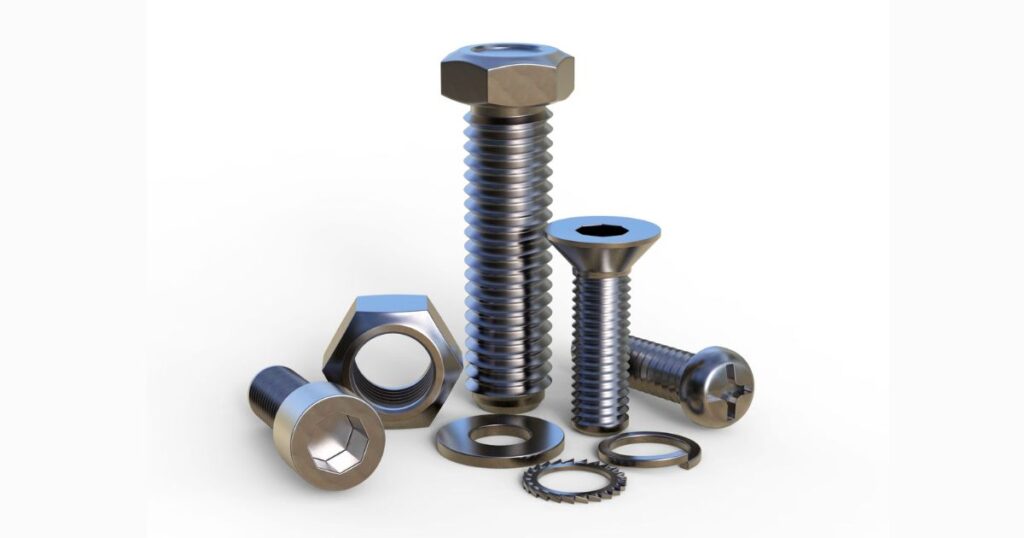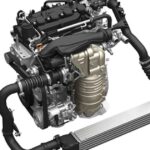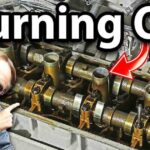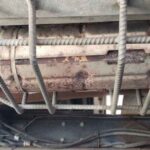Bolts and nuts are the unsung heroes of the automotive world. These small but mighty fasteners hold our vehicles together, ensuring safety and performance on the road.
But have you ever wondered why there are so many different types of bolts and nuts, or how they’re named? Let’s embark on a journey to demystify the language of automotive fasteners.
Chapter 1: Components of Bolts and Bolted Joints

To understand how bolts and nuts are named, we first need to break down their components. Each part plays a crucial role in the fastener’s function and identification.
Bolt Shaft
The bolt shaft is the main body of the bolt, extending from the head to the tip. It can be:
- Fully threaded
- Partially threaded
- Unthreaded (also known as a shoulder bolt)
The shaft’s design influences the bolt’s strength, application, and naming convention. For example, a partially threaded bolt might be referred to as a “shoulder bolt” in certain contexts.
Bolt Head
The bolt head is where the tool engages to tighten or loosen the fastener. Common head styles include:
- Hex head
- Socket head
- Flange head
- Button head
Each head style serves a specific purpose and is often included in the bolt’s name. For instance, a “hex head bolt” is immediately identifiable by its six-sided head.
Nuts as Bolt Components
Nuts are the counterparts to bolts, providing the threaded socket that secures the bolt in place. Some common nut types in automotive applications include:
- Hex nuts
- Flange nuts
- Lock nuts
- Castle nuts
The type of nut used often complements the bolt’s name and function. For example, a “lock nut” is designed to resist loosening under vibration.
Washers as Bolt Components
While not always included in bolt naming, washers play a vital role in many bolted joints. They distribute load, prevent corrosion, and can provide a locking function. Common types include:
- Flat washers
- Lock washers
- Belleville washers
More Post:
Understanding Insurance Payouts For Totaled Vehicles
Chapter 2: Fastener Terminologies Related to Bolts

Understanding the terminology used to describe bolt dimensions is key to decoding their names in automotive applications.
Shank Diameter
The shank diameter is the width of the bolt’s body, typically measured in inches or millimeters. It’s a crucial dimension in bolt naming. For example, a “1/4-20 bolt” has a 1/4 inch shank diameter.
Major Diameter
The major diameter is the largest diameter of a screw thread, measured from crest to crest. It’s slightly larger than the shank diameter and is essential for proper fit.
Minor Diameter
The minor diameter is the smallest diameter of a screw thread, measured from root to root. It affects the bolt’s strength and is considered in load-bearing calculations.
Pitch Diameter
The pitch diameter is the theoretical diameter halfway between the major and minor diameters. It’s crucial for proper thread engagement and is used in quality control.
Nominal Length
The nominal length of a bolt is typically measured from under the head to the end of the shank. It’s a key part of bolt naming, often expressed in inches or millimeters.
Thread Pitch
Thread pitch is the distance between adjacent thread crests. In imperial measurements, it’s often expressed as threads per inch (TPI). For metric bolts, it’s the distance between threads in millimeters.
Threads Per Inch (TPI)
TPI is used in imperial bolt naming to indicate thread density. For example, a “1/4-20” bolt has 20 threads per inch.
Right-Handed and Left-Handed Threads
Most automotive bolts have right-handed threads, tightening clockwise. Left-handed threads are rare but used in specific applications, such as on the left side of some vehicles to prevent loosening due to rotation.
Chamfer and Chamfer Angle
The chamfer is the angled edge at the start of the threads, facilitating easier engagement. The chamfer angle can affect installation ease and is sometimes specified for critical applications.
What Are The Four Basic Dimensions Of A Bolt?
When identifying bolts in automotive terminology, four key dimensions are typically referenced:
- Diameter: The width of the bolt’s shank
- Length: The distance from under the head to the end of the shank
- Thread pitch: The spacing between thread crests
- Head size: The dimension across the flats of the head (for hex bolts)
These dimensions form the backbone of bolt naming conventions in automotive applications.
Describe Six Ways To Remove Broken Fasteners
Dealing with broken fasteners is a common challenge in automotive repair. Here are six effective methods for removing stubborn broken bolts:
- Drilling and using an extractor: Drill a small hole in the center of the broken bolt and use a spiral fluted extractor to remove it.
- Welding a nut to the broken bolt: Attach a nut to the broken bolt stub with a welder, then use a wrench to unscrew it.
- Using a left-handed drill bit: These special bits can sometimes catch and remove the broken bolt while drilling.
- Applying penetrating oil and heat: Soak the area with penetrating oil, apply heat, and attempt to remove with pliers or vice grips.
- Using a bolt extractor kit: These kits contain specialized tools designed for removing broken fasteners.
- Cutting a slot and using a flathead screwdriver: For exposed broken bolts, cut a slot and use a large flathead screwdriver to unscrew it.
Types of Bolts

The automotive industry uses a wide variety of bolt types, each designed for specific applications. Here’s a brief overview of some common types:
- Hex bolts: Standard bolts with six-sided heads
- Flange bolts: Feature a wide, flat bearing surface under the head
- Socket head bolts: Have a cylindrical head with a hexagonal socket
- Carriage bolts: Have a smooth, rounded head and square neck
- U-bolts: U-shaped bolts often used for attaching leaf springs
- Shoulder bolts: Have an unthreaded section (shoulder) between the head and threads
Each of these bolt types may be further specified by material (e.g., stainless steel, grade 8 steel) and finish (e.g., zinc-plated, black oxide) in their naming.
Leading Bolts Manufacturers and Suppliers
Several companies lead the way in producing high-quality bolts for the automotive industry:
- Bolt Products, Inc.: Known for their wide range of automotive fasteners
- Southern Fasteners & Supply, LLC: Specializes in hard-to-find and custom bolts
- Hi-Tech Fasteners, Inc.: Offers innovative fastening solutions for modern vehicles
- B&G Manufacturing Company: Produces high-strength bolts for critical automotive applications
These manufacturers play a crucial role in maintaining the safety and reliability of vehicles on American roads.
Read More Post:
How Long Does Automotive Paint Take To Dry?
Frequently Ask Questions
What is the car called the Bolt?
The Bolt is a compact electric vehicle manufactured by Chevrolet, known for its affordability and impressive range.
What is a bolt on for a car?
A bolt-on refers to aftermarket parts that can be easily attached to a car without major modifications.
What is the bolt on a car wheel called?
The bolt on a car wheel is commonly referred to as a lug bolt or wheel bolt.
What are the bolts that hold on a car tire?
The bolts that secure a car tire to the wheel hub are called lug bolts or lug nuts.
What are lug bolts in automotive?
Lug bolts are fasteners used to secure wheels to a vehicle’s hub, providing stability and safety.
Conclusion
Understanding how bolts and nuts are named in automotive terminology is essential for anyone working on vehicles. From the basic components to the intricate naming conventions, this knowledge empowers mechanics and DIY enthusiasts to select the right fasteners for any job. As vehicles continue to evolve, so too will the world of automotive fasteners, making ongoing education in this field invaluable.
Remember, proper identification and use of bolts and nuts is not just about convenience—it’s about ensuring the safety and longevity of the vehicles we rely on every day. So the next time you’re working on your car, take a moment to appreciate the complex world of automotive fasteners that keeps everything running smoothly.







